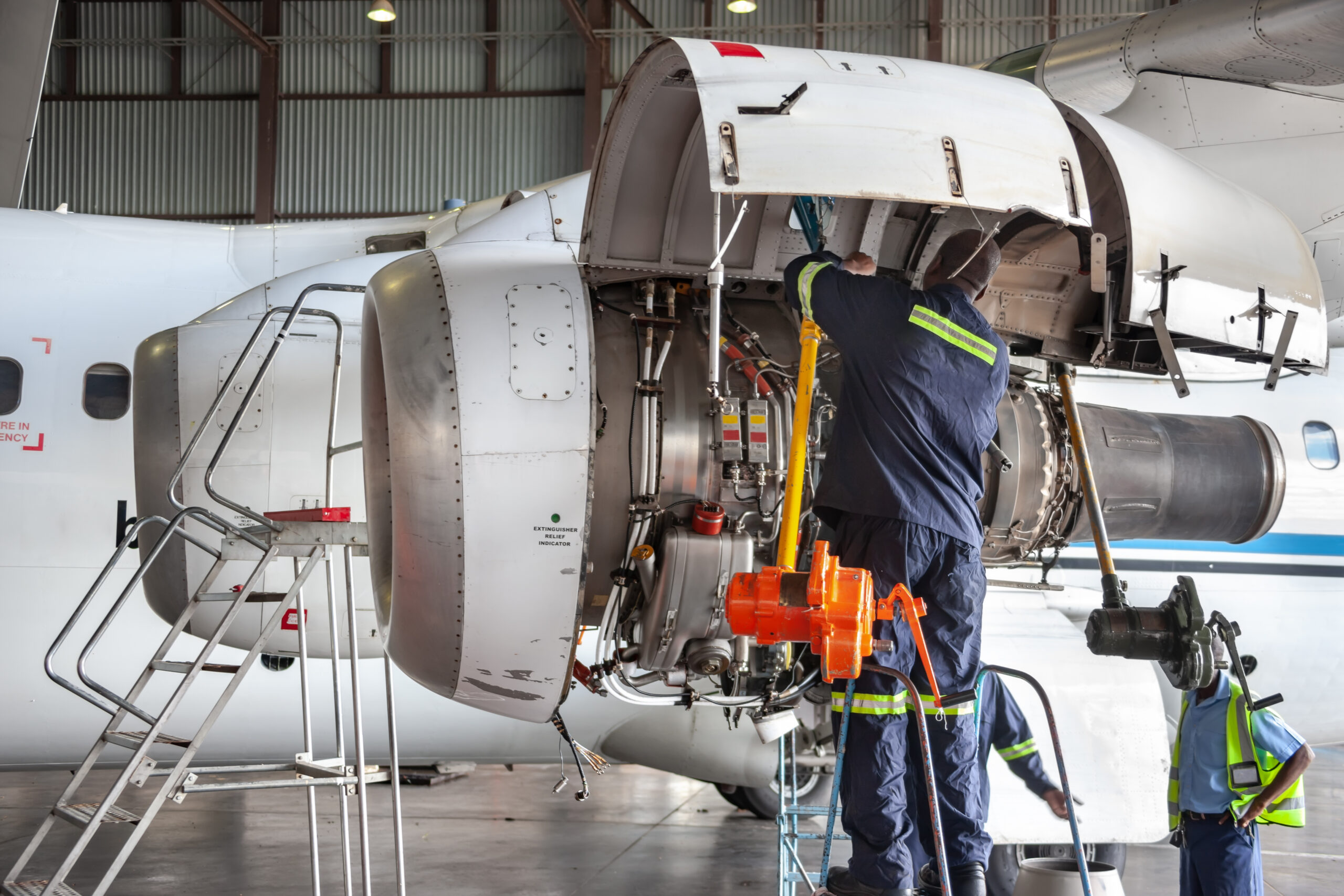Aviation Operators: Exclusive Risk Management Insights at IFS Unleashed

By Thomas Blomquist
Vice President, ERP Practice, Tsunami Tsolutions
Joe LeVasseur
Executive Vice President, Tsunami Tsolutions
Visit Tsunami Tsolutions at IFS Unleashed October 14-18 in Orlando, Fla. for exclusive insights into how we are using IFS Maintenix, IFS ERP and other software to help airlines reduce cost and risk (book your appointment here).
Here is a taste of what you will learn about when you join us at IFS Unleashed.
Rising Revenue, Thin Margins
Airlines and aircraft fleet operators need to guard their margins by reducing unanticipated costs and by increasing efficiencies. Liabilities for regulatory violations may be an excellent non-value-added expense to target because the FAA Reauthorization Act of 2024 triples the DOT’s maximum civil penalty for airline consumer violations from $25,000 to $75,000, per violation.
Reducing unnecessary costs is important despite the fact that intermediate future looks bright for the airline industry, with the International Air Transport Association (IATA) projecting 2024 airline net profits to increase from $27.4 billion in 2023 to $30.5 billion on a record $996 billion in total revenues.
Return on capital, however, is still a bottleneck with 5.7 return in 2024 according to IATA, which is 3.4 percent below the average cost of capital. And while net profits are increasing, the industry is still expected to see profit margins of only 3.1 percent. This may be an improvement over the IATA’s earlier projection of 2.7% but makes margin protection a critical priority. Also critical will be anything airlines and fleets can do to maximize return on capital assets like aircraft.
Aviation Regulatory Help from Tsunami Tsolutions
Over decades in aviation, Tsunami Tsolutions has seen airlines, particularly smaller ones with fewer configuration engineers and mechanics, struggle to confidently verify that aircraft are configured with the right allowable parts.
Mechanics, engineers and maintenance planners charged with provisioning compliant aircraft are often in a poor position to ascertain whether or not the current configuration is compliant. Does each part adhere to the currently allowed parts list? Failure can be expensive, in both fines and disruption of operations. Yet data from aircraft OEMs comes in various formats, most of which do not translate easily into digital systems used to support aircraft maintenance and operation.
Aircraft Configuration Management Assurance
Despite the fact that much of this data originates from flat representations like PDF files, and tabular formats that exist do not conform to a consistent standard, Tsunami Tsolutions can, with its WAVES methodology, ingest the broad spectrum of data sources and that must be folded into configuration data—including flat files like PDFs.
Tsunami Tsolutions has developed the WAVES Data Management Toolset for initial data migration into ERP, MRO and Maintenance and Engineering (M&E) software—but the tooling has ongoing applicability as new allowable parts lists, service bulletins and other documents are released by aircraft original equipment manufacturers (OEMs). WAVES is short for:
- Wash: Extract customer data and initial storage for downstream processes
- Analyze: Subject matter experts transform, cleanse and analyze the data
- Verify: Create rules to ensure data integrity, verified by subject matter experts
- Enhance: Data enrichment to meet unique needs
- Store: Creation of a living and evolving ontology around the dataset
Tsunami Tsolutions, in its work with airlines and aircraft fleet operators is using WAVES to address risk exposure caused by outdated configuration data, and combines this tooling with appropriate aviation software solutions, domain-specific knowledge and packaged professional services. Airlines can rely on Tsunami Tsolutions to maintain their configuration data with each quarterly update from aircraft OEMs.
Aircraft Maintenance Software Efficiency
Clear visibility of the current configuration and how it compares to allowable condition also streamlines ongoing maintenance, saving time of both mechanics and engineering staff. Oftentimes, mechanics call the engineering department, sometimes multiple times per day, because they can’t find a specific part in the maintenance software system, or cannot tell definitively if it is allowable on the specific aircraft they are working on. This lengthens mean time to repair and consumes additional labor hours. Tsunami Tsolutions’ WAVES toolset streamlines allowable configuration updates to any maintenance software system, enabling mechanics and engineers to quickly access system to verify part allowability throughout the maintenance planning and execution process.
More IFS Aviation Software Advances
Visitors to the Tsunami Tsolutions exhibit at IFS Unleashed can also learn how:
- With help from Tsunami Tsolutions, airlines and MRO operations can prevent shrinkage of their ground-based equipment with GPS trackers
- Thanks to a custom mobile work order from Tsunami Tsolutions, airlines can now operate in an integrated environment between IFS Maintenix for airframe maintenance and IFS ERP products including IFS Cloud and IFS Applications—with full visibility of spares and repairs parts through the supply chain
- IFS Cloud’s artificial-intelligence (AI)-based scheduling optimization system, integrated with IFS Cloud, will help MRO shops get the most out of their mechanic workforces while meeting or exceeding service level agreements (SLAs) with customers
- IFS Maintenix can be made affordable enough for small airlines with as few as 50 aircraft through a packaged Tsunami Tsolutions configuration and implementation at a fixed, not-to-exceed price
Over decades in aviation, Tsunami Tsolutions has seen airlines, particularly smaller ones with fewer configuration engineers and mechanics, struggle to confidently verify that aircraft are configured with the right allowable parts.
Learn the the vulnerabilities A&D manufacturers face from their own aerospace and defense (ERP) software.
ERP and MRP were designed for repetitive manufacturing. How are IFS and Tsunami Tsolutions delivering shipbuilding ERP?
Tsunami Tsolutions has introduced a new WAVES Configuration Support Toolkit for aircraft operators, both commercial and defense.
Aviation Operators: Exclusive Risk Management Insights at IFS Unleashed

By Thomas Blomquist
Vice President, ERP Practice, Tsunami Tsolutions
Joe LeVasseur
Executive Vice President, Tsunami Tsolutions
Visit Tsunami Tsolutions at IFS Unleashed October 14-18 in Orlando, Fla. for exclusive insights into how we are using IFS Maintenix, IFS ERP and other software to help airlines reduce cost and risk (book your appointment here).
Here is a taste of what you will learn about when you join us at IFS Unleashed.
Rising Revenue, Thin Margins
Airlines and aircraft fleet operators need to guard their margins by reducing unanticipated costs and by increasing efficiencies. Liabilities for regulatory violations may be an excellent non-value-added expense to target because the FAA Reauthorization Act of 2024 triples the DOT’s maximum civil penalty for airline consumer violations from $25,000 to $75,000, per violation.
Reducing unnecessary costs is important despite the fact that intermediate future looks bright for the airline industry, with the International Air Transport Association (IATA) projecting 2024 airline net profits to increase from $27.4 billion in 2023 to $30.5 billion on a record $996 billion in total revenues.
Return on capital, however, is still a bottleneck with 5.7 return in 2024 according to IATA, which is 3.4 percent below the average cost of capital. And while net profits are increasing, the industry is still expected to see profit margins of only 3.1 percent. This may be an improvement over the IATA’s earlier projection of 2.7% but makes margin protection a critical priority. Also critical will be anything airlines and fleets can do to maximize return on capital assets like aircraft.
Aviation Regulatory Help from Tsunami Tsolutions
Over decades in aviation, Tsunami Tsolutions has seen airlines, particularly smaller ones with fewer configuration engineers and mechanics, struggle to confidently verify that aircraft are configured with the right allowable parts.
Mechanics, engineers and maintenance planners charged with provisioning compliant aircraft are often in a poor position to ascertain whether or not the current configuration is compliant. Does each part adhere to the currently allowed parts list? Failure can be expensive, in both fines and disruption of operations. Yet data from aircraft OEMs comes in various formats, most of which do not translate easily into digital systems used to support aircraft maintenance and operation.
Aircraft Configuration Management Assurance
Despite the fact that much of this data originates from flat representations like PDF files, and tabular formats that exist do not conform to a consistent standard, Tsunami Tsolutions can, with its WAVES methodology, ingest the broad spectrum of data sources and that must be folded into configuration data—including flat files like PDFs.
Tsunami Tsolutions has developed the WAVES Data Management Toolset for initial data migration into ERP, MRO and Maintenance and Engineering (M&E) software—but the tooling has ongoing applicability as new allowable parts lists, service bulletins and other documents are released by aircraft original equipment manufacturers (OEMs). WAVES is short for:
- Wash: Extract customer data and initial storage for downstream processes
- Analyze: Subject matter experts transform, cleanse and analyze the data
- Verify: Create rules to ensure data integrity, verified by subject matter experts
- Enhance: Data enrichment to meet unique needs
- Store: Creation of a living and evolving ontology around the dataset
Tsunami Tsolutions, in its work with airlines and aircraft fleet operators is using WAVES to address risk exposure caused by outdated configuration data, and combines this tooling with appropriate aviation software solutions, domain-specific knowledge and packaged professional services. Airlines can rely on Tsunami Tsolutions to maintain their configuration data with each quarterly update from aircraft OEMs.
Aircraft Maintenance Software Efficiency
Clear visibility of the current configuration and how it compares to allowable condition also streamlines ongoing maintenance, saving time of both mechanics and engineering staff. Oftentimes, mechanics call the engineering department, sometimes multiple times per day, because they can’t find a specific part in the maintenance software system, or cannot tell definitively if it is allowable on the specific aircraft they are working on. This lengthens mean time to repair and consumes additional labor hours. Tsunami Tsolutions’ WAVES toolset streamlines allowable configuration updates to any maintenance software system, enabling mechanics and engineers to quickly access system to verify part allowability throughout the maintenance planning and execution process.
More IFS Aviation Software Advances
Visitors to the Tsunami Tsolutions exhibit at IFS Unleashed can also learn how:
- With help from Tsunami Tsolutions, airlines and MRO operations can prevent shrinkage of their ground-based equipment with GPS trackers
- Thanks to a custom mobile work order from Tsunami Tsolutions, airlines can now operate in an integrated environment between IFS Maintenix for airframe maintenance and IFS ERP products including IFS Cloud and IFS Applications—with full visibility of spares and repairs parts through the supply chain
- IFS Cloud’s artificial-intelligence (AI)-based scheduling optimization system, integrated with IFS Cloud, will help MRO shops get the most out of their mechanic workforces while meeting or exceeding service level agreements (SLAs) with customers
- IFS Maintenix can be made affordable enough for small airlines with as few as 50 aircraft through a packaged Tsunami Tsolutions configuration and implementation at a fixed, not-to-exceed price
Over decades in aviation, Tsunami Tsolutions has seen airlines, particularly smaller ones with fewer configuration engineers and mechanics, struggle to confidently verify that aircraft are configured with the right allowable parts.
Learn the the vulnerabilities A&D manufacturers face from their own aerospace and defense (ERP) software.
ERP and MRP were designed for repetitive manufacturing. How are IFS and Tsunami Tsolutions delivering shipbuilding ERP?
LOCATIONS
655 Winding Brook Drive,
Glastonbury, CT 06033
MELBOURNE, FL:
1333 Gateway Drive
Suites 1018-1019
Melbourne, FL 32901
DAYTON, OH:
210 W National Rd, Suite 5,
Vandalia, OH 45377
LOUISVILLE, KY:
9850 Von Allmen Court, Suite 301
Louisville, KY 40241
Contact Us
Phone: +1.860.266.6885
© 2021 TSUNAMI TSOLUTIONS
Contact Us
Phone: +1.860.266.6885
LOCATIONS
655 Winding Brook Drive,
Glastonbury, CT 06033
MELBOURNE, FL:
1333 Gateway Drive
Suites 1018-1019
Melbourne, FL 32901
DAYTON, OH:
210 W National Rd, Suite 5,
Vandalia, OH 45377
LOUISVILLE, KY:
9850 Von Allmen Court, Suite 301
Louisville, KY 40241
© 2021 TSUNAMI TSOLUTIONS


